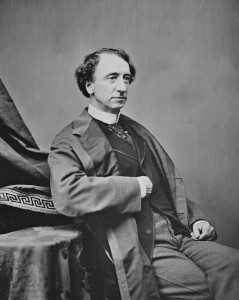Inducted 2001
Sir John A. MacDonald was Canada’s first Prime Minister and is associated with the building of the Canadian Pacific Railway (CPR). The railway was a symbol of growth that would tie the country together from coast to coast.
John A. MacDonald was born in Glasgow Scotland and moved to Kingston in 1820. He became an alderman in 1843 and was later elected to the Canadian Assembly of Canada West. On July 1, 1867 he was elected to govern the newly formed union, which included Quebec, Ontario, New Brunswick, and Nova Scotia.
To encourage British Columbia to join Confederation, MacDonald promised a continental railway linking this colony to the rest of the country. He also felt it would help prevent the Americans from claiming the land for themselves. The railway was started, but soon faced financial problems and turned to the government for help.
MacDonald, who believed in the railway, got the Franchise Bill passed in caucus and then fought for the passage in House of Commons. The bill proposed that the government use bonds as security for a previous loan and an advance of another 5 million dollars. After months of discussing, the Franchise Bill was passed on June 16, 1885.
It was through his efforts that the CPR first became a reality to many Canadians. The railway plan floundered when MacDonald resigned in 1873. When he returned, he put a large effort into the completion of the transcontinental railway. He fought every step of the way and when financial problems occurred. MacDonald’s dream was realized on November 7, 1885 with Donald Smith of the CPR driving home the last spike.
On May 29th, 1891 MacDonald suffered a stroke which left him paralysed. Everyone mourned, knowing that country’s prime minister had only a little time left. On June 6, the news came that John A. MacDonald had died. He was carried to Kingston by train to be buried next to his family.


